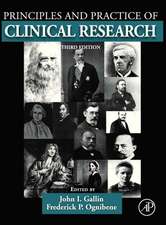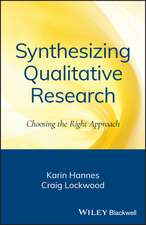Biocolloids and their Interactions: With Special Reference to Coacervates and Related Systems: Protoplasmatologia Cell Biology Monographs, cartea 1 / 2
Autor Heinerle L. Booij, Hendrik G. Bungenberg de Jongen Limba Engleză Paperback – 1956
Din seria Protoplasmatologia Cell Biology Monographs
-
 Preț: 408.82 lei
Preț: 408.82 lei - 15%
 Preț: 717.27 lei
Preț: 717.27 lei -
 Preț: 377.73 lei
Preț: 377.73 lei - 5%
 Preț: 393.71 lei
Preț: 393.71 lei - 15%
 Preț: 502.04 lei
Preț: 502.04 lei -
 Preț: 412.13 lei
Preț: 412.13 lei - 15%
 Preț: 495.18 lei
Preț: 495.18 lei -
 Preț: 412.13 lei
Preț: 412.13 lei -
 Preț: 410.17 lei
Preț: 410.17 lei -
 Preț: 422.11 lei
Preț: 422.11 lei - 15%
 Preț: 636.94 lei
Preț: 636.94 lei -
 Preț: 379.48 lei
Preț: 379.48 lei -
 Preț: 424.81 lei
Preț: 424.81 lei -
 Preț: 416.71 lei
Preț: 416.71 lei -
 Preț: 411.93 lei
Preț: 411.93 lei -
 Preț: 411.16 lei
Preț: 411.16 lei -
 Preț: 378.34 lei
Preț: 378.34 lei -
 Preț: 346.56 lei
Preț: 346.56 lei -
 Preț: 376.80 lei
Preț: 376.80 lei -
 Preț: 379.30 lei
Preț: 379.30 lei -
 Preț: 413.27 lei
Preț: 413.27 lei -
 Preț: 412.51 lei
Preț: 412.51 lei -
 Preț: 384.70 lei
Preț: 384.70 lei -
 Preț: 378.71 lei
Preț: 378.71 lei -
 Preț: 378.71 lei
Preț: 378.71 lei - 15%
 Preț: 633.84 lei
Preț: 633.84 lei -
 Preț: 415.39 lei
Preț: 415.39 lei -
 Preț: 376.43 lei
Preț: 376.43 lei -
 Preț: 387.20 lei
Preț: 387.20 lei -
 Preț: 383.71 lei
Preț: 383.71 lei -
 Preț: 385.25 lei
Preț: 385.25 lei -
 Preț: 379.86 lei
Preț: 379.86 lei -
 Preț: 411.54 lei
Preț: 411.54 lei - 15%
 Preț: 495.18 lei
Preț: 495.18 lei -
 Preț: 416.16 lei
Preț: 416.16 lei -
 Preț: 393.90 lei
Preț: 393.90 lei -
 Preț: 421.17 lei
Preț: 421.17 lei -
 Preț: 378.71 lei
Preț: 378.71 lei - 15%
 Preț: 637.28 lei
Preț: 637.28 lei -
 Preț: 411.32 lei
Preț: 411.32 lei -
 Preț: 380.63 lei
Preț: 380.63 lei -
 Preț: 413.07 lei
Preț: 413.07 lei -
 Preț: 416.71 lei
Preț: 416.71 lei -
 Preț: 410.39 lei
Preț: 410.39 lei - 15%
 Preț: 491.43 lei
Preț: 491.43 lei - 15%
 Preț: 498.94 lei
Preț: 498.94 lei -
 Preț: 412.89 lei
Preț: 412.89 lei
Preț: 383.33 lei
Nou
Puncte Express: 575
Preț estimativ în valută:
73.36€ • 76.31$ • 60.56£
73.36€ • 76.31$ • 60.56£
Carte tipărită la comandă
Livrare economică 14-28 aprilie
Preluare comenzi: 021 569.72.76
Specificații
ISBN-13: 9783211804216
ISBN-10: 3211804218
Pagini: 168
Ilustrații: IV, 164 p.
Dimensiuni: 178 x 254 x 9 mm
Greutate: 0.3 kg
Editura: SPRINGER VIENNA
Colecția Springer
Seriile Protoplasmatologia Cell Biology Monographs, Grundlagen
Locul publicării:Vienna, Austria
ISBN-10: 3211804218
Pagini: 168
Ilustrații: IV, 164 p.
Dimensiuni: 178 x 254 x 9 mm
Greutate: 0.3 kg
Editura: SPRINGER VIENNA
Colecția Springer
Seriile Protoplasmatologia Cell Biology Monographs, Grundlagen
Locul publicării:Vienna, Austria
Public țintă
ResearchCuprins
1. The Rôle of Colloids in Biological Systems.- References.- 2. Colloid Systems.- References.- 3. Colloids with Electrolytic Nature.- Antagonism of ions.- References.- 4. Complex Systems.- a) Unicomplex systems.- b) Dicomplex systems.- c) Tricomplex systems.- d) Some biological examples.- References.- 5. Association Colloids.- a) Introduction; micelle types.- b) Colloid systems of simple detergents, characterised by the presence of sandwich micelles.- c) The binding of the oppositely charged ion (The sandwich micelle regarded as a complex system).- d) Phosphatides regarded as association colloids.- e) Suitability of phosphatides for biological purposes.- References.- 6. Elastic-Viscous Systems of Association Colloids.- a) Introduction.- b) Viscosity.- c) Elastic-viscous systems are in thermodynamic equilibrium.- d) Characteristic quantities describing the elastic properties.- e) G, ? and ? as a function of the oleate concentration.- f) A comparison of the elastic behaviour of elastic-viscous systems of various soaps.- g) Elastic-viscous systems of long chain electrolytes of the second and third categories (phosphatides).- References.- 7. The Interaction between Organic Substances and Lipophilic Colloid Systems.- a) Introduction.- b) Methods.- c) The activity of aliphatic substances.- d) The activity of aromatic (and heterocyclic) substances.- e) The distribution of organic substances in the soap/salt/water system.- f) The influence of alcohols on the fixation of ions.- g) The influence of organic substances on elastic-viscous systems.- h) Biological perspectives.- References.- 8. Interaction between Long Chain Electrolytes and Proteins.- a) Introduction. The coacervation gelatin + detergent + salt.- b) The binding between protein and detergent according to thehypothesis of Pankhurst.- c) The rôle of the salt necessary for coacervation.- d) The realisation of the coacervation gelatin + cetyltrimethyl-ammonium-bromide + salt.- e) The coacervation gelatin + oleate + K-salt.- f) Particulars of the coacervation gelatin + CTAB + KCNS.- g) Structure and composition of the detergent-rich associations.- h) The loosening effect of alcohols on the association gelatin + detergent.- References.- 9. Biological Membranes.- a) Introduction.- b) Models of the protoplasmic membrane.- c) Theoretical aspects of permeability.- d) Some experiments on the problem of the protoplasmic membrane.- References.- 10. Some Remarks on the Colloid Chemistry of Protoplasm.- a) Colloid morphology.- b) The submicroscopical structure of cytoplasm.- c) Protoplasmic flow.- References.













